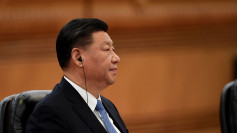European gas prices saw an explosive mid-session surge of 40% on Wednesday, crossing the 40 euro/MWh mark. This significant rise marks the largest increase since the early stages of the Russia-Ukraine conflict in March 2022, continuing the upward trend observed in the previous two trading sessions.
The spike is attributed, in part, to potential strikes at some Australian factories, which could amplify risks associated with Europe's liquefied natural gas (LNG) supply. Reports have emerged that workers at Australia's Chevron and Woodside Energy have voted in favor of a strike, potentially impacting the nation's LNG exports and thus tightening the global fuel market. The exact timing of the strike, if it proceeds, remains uncertain.
Analysts suggest that supply disruptions could cause Asian buyers to increase LNG imports, subsequently affecting the European market. As LNG becomes a foundational load in Europe's gas supply mix, any signs indicating risks to this supply can drive prices upwards.
Other factors contributing to the surge in European gas prices include potential delays in Norway's seasonal maintenance, a decrease in Europe's LNG imports last month, increased flows to Ukraine, and climatic conditions. Market insiders believe that high temperatures play a pivotal role. Currently, forecasts indicate prolonged heat into the third week of August and expanding high-temperature zones in most parts of the U.S., surpassing prior predictions.
The recent spike in gas prices might trigger a short-covering rally among investors who had previously bet on further declines in natural gas. The hot weather has propelled speculative short covering, a situation reminiscent of market volatility witnessed in June.
However, more significant concerns appear on the horizon. Contracts for winter gas have also been on the rise, albeit at a slower pace. German utility company EON SE warns of increased risks in the upcoming heating season, cautioning that "the crisis is not over. Yet, the chances of a repeat of last year's scenario have diminished."
U.S. gas prices also followed suit on Wednesday. NYMEX September natural gas futures rose by 6.55%, settling at $2.9590 per million British thermal units.
The gas arbitrage trade between the U.S. and Europe has once again expanded, moving outside its historical range. Earlier this year, it had returned to its historical norm.
On Wednesday, oil and coal prices similarly surged. WTI September crude oil futures rose by $1.48, a 1.78% increase, settling at $84.40 per barrel. Brent October crude oil futures were up by $1.38, an increase of 1.60%, to $87.55 per barrel.
Financial blog Zerohedge commented, "Winter is coming, and with it, inflation."
Articles on the Wall Street Vision website mentioned that, influenced by the recent surge in energy prices, key U.S. inflation indicators are nearing their nine-year peak set last year, while the indicator for the Eurozone has reached its highest level since 2010. This suggests that many investors believe the persistence of inflation in the U.S. and Europe might be significant, making it challenging to return to the 2% target.






